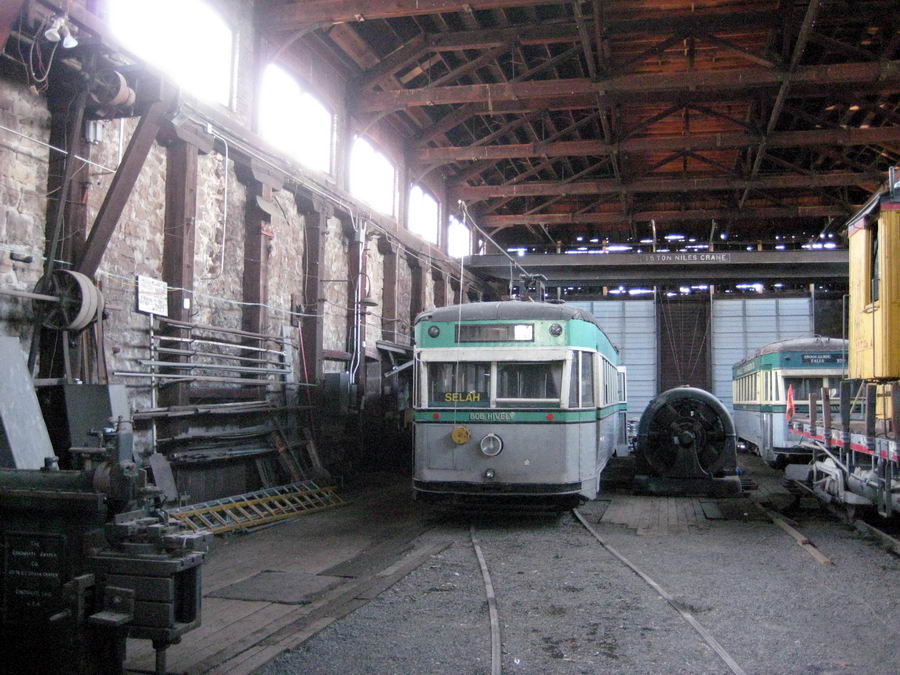Did Trolley Barns have Overhead Cranes like many RR diesel and roundhouse shops?
Replies sorted oldest to newest
In larger systems, barns were generally indoor storage that allowed running minor maintenance that were subservient to a main repair shop. Some had dedicated painting, carpentry sections. Overhead cranes as far as I know, were not generally used as jacking seems to have been common to raise a frame. Machine shops, electrical departments usually shared shop space. I have never seen an overhead crane in a shop perhaps due to moving the cars in and out with overhead energized wire. Fabrication shops like the PE and IT and some others had who built or modified their own equipment may have used them.
The Yakima streetcar system had an overhead crane in it's barn and it is visible in a photo on their website. The system still operates on a short stretch as a museum.
In the Texas Electric Railway shop in the Oak Cliff section of Dallas there is a large traveling overhead crane over the shop floor. Building is currently used by the Dallas Area Rapid Transit Police as offices.
Phil R.
I would guess that track pits were more essential for routine trolley service, to inspect and change traction motor brushes, add gear lube etc.
The L&WV, most commonly known as the "Laurel Line" had an overhead crane in their car barn.
The Shore Line Trolley Museum has a stationary hoist over the shop floor (powered by compressed air, no less), but no trolley wire in that section of the shop. Cars are moved in and out with jumper cables hooked over the trolley wire, and any carbody lifting is accomplished through electric jacks.
---PCJ
The Yakima streetcar system had an overhead crane in it's barn and it is visible in a photo on their website. The system still operates on a short stretch as a museum.
And it still works. Saw it the other day.
And here it is...

Just follow this link. The Electric Railway Handbook by A.S. Richey is the BIBLE of classic trolley and interurban infrastructure. I call particular attention to the chapter of buildings which begins on Page 97.
Since I already posted a link to the "Bible", here's a link to the Talmud of electric railway infrastructure.
The Engineering Manual of the American Electric Railway Engineering Association (1922)
http://books.google.com/books?id=-9oNAAAAYAAJ&source=gbs_similarbooks
The carhouse usually would not have overhead cranes because they interfere with the trolley wire. The car house was for overnight storage of the cars and light maintenance. On most systems there was also a separate shop. The shop may have had an overhead crane and the cars were either towed in or run in using portable cords. Many shops had short stub tracks so repaired cars would not be trapped behind cars under repair. Many shops used car jacks. Synchronized electric jacks are very popular today. Most cars are built with jack pads for use with jacks.
Thanks for the Yakima photos. It has been many years since I have worked there. The two track building with the overhead crane was the shop. The carhouse was a low building next door. I do not know if the car house is still there. The shop was certainly the more interesting building. As I recall the capacity of the crane was fairly low, useful for removing traction motors from trucks, but the cars and locomotives would have to be jacked to get the trucks out.


